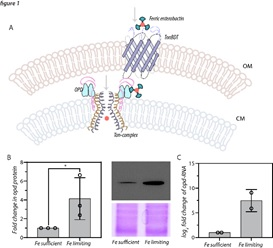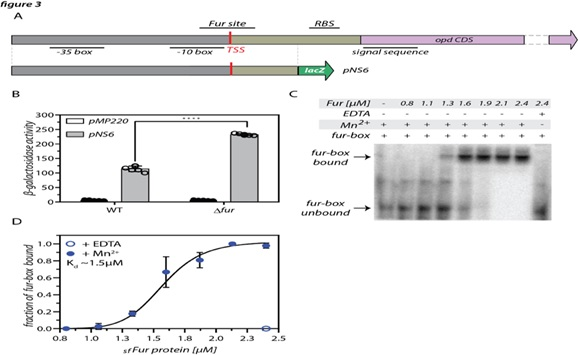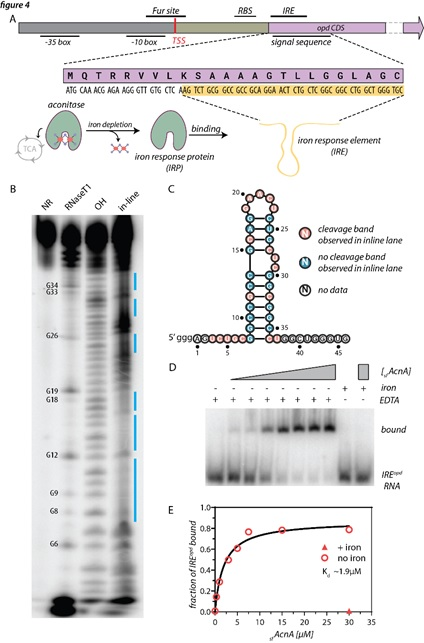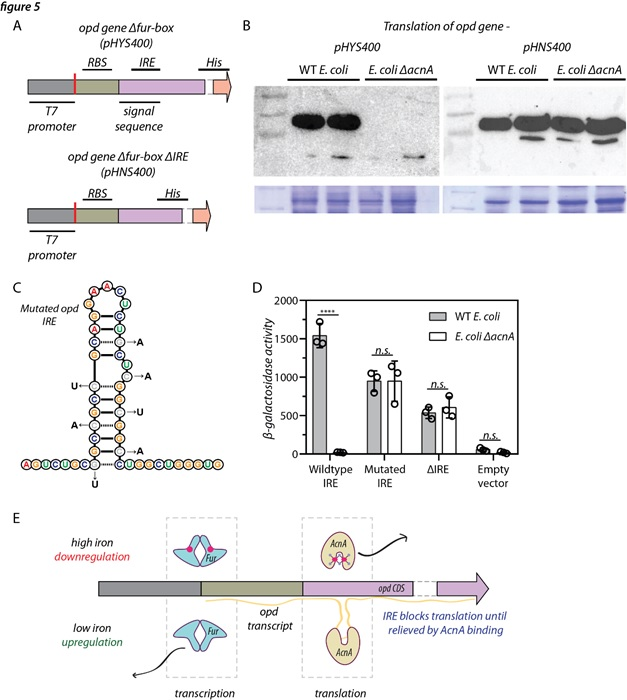Scientists studying the soil bacteria Sphingobium fuliginis found a very unusual relationship between biodegradation of organophosphates and its iron uptake capacity. Their research shows that iron uptake mediated by the enzyme involved in degradation of organophosphates promotes survival ability of bacteria in soil and restores soil fertility.

Induction of OPH expression under iron limiting condition
A class of chemicals called Easters of phosphoric acid, or organophosphates, were developed as chemical weapons and later used as insecticides. They were found to be potent neurotoxins and needed to be removed from the environment rapidly after their use as insecticides. As scientists searched for a solution they stumbled on organophosphate hydrolase (OPH), an enzyme that can hydrolyse organophosphate insecticides and nerve agents at a rate close to the their diffusion limit. These were identified in soil bacteria isolated from agricultural soils polluted with organophosphate (OP) insecticides-- Sphingobium fuliginis being one of them.
S. fuliginis codes for OPH, an enzyme that has been shown to be involved in the metabolism of several organophosphates and their derivatives, at the same time, OPH has also been shown to facilitate iron uptake in S. fuliginis. The scientists found a clue in exploring the physiological role of OPH in soil bacteria—an area which has been relatively less probed, in this dual property of soil bacterial enzyme.

The fur-box motif identified overlapping the promoter region of opd gene.
A research carried out jointly by the University of Hyderabad, Bangalore based National Centre for Biological Sciences, The University of Trans-Disciplinary Health Sciences & Technology (TDU), and GITAM University, Visakhapatnam, India, supported by the CORE grant of SERB, an attached institution of the Department of Science and Technology (DST) has divulge the molecular mechanism linking iron and the expression of OPH and prompted a reconsideration of the role of OPH in Sphingomonads species of bacterial and a re-evaluation of the evolutionary origins of the OPH proteins from soil bacteria.
The research published in the journal Applied and Environmental Microbiology showed that the OPH-encoding organophosphate degradation (OPH) gene from Sphingobium fuliginis is part of the iron regulation and that expression of organophosphate degrading gene (opd) coding OPH is regulated both by ferric uptake regulator (FUR) and iron responsive element (IRE). It adds to the existing knowledge and redefines the physiological role of bacterial triesterases.
Link to publication: https://doi.org/10.1128/aem.01903-22
For more details, please contact: Prof. Dayananda Siddavattam, University of Hyderabad at siddavattam[at]gmail[dot]com/ sdsl[at]uohyd[dot]ac[dot]in / dsiddava[at]gitam[dot]edu

Iron Responsive Element (IRE) identified at the 5’ region of mRNA coding OPH

Iron Responsive Protein (IRP) dependent expression of OPH






























